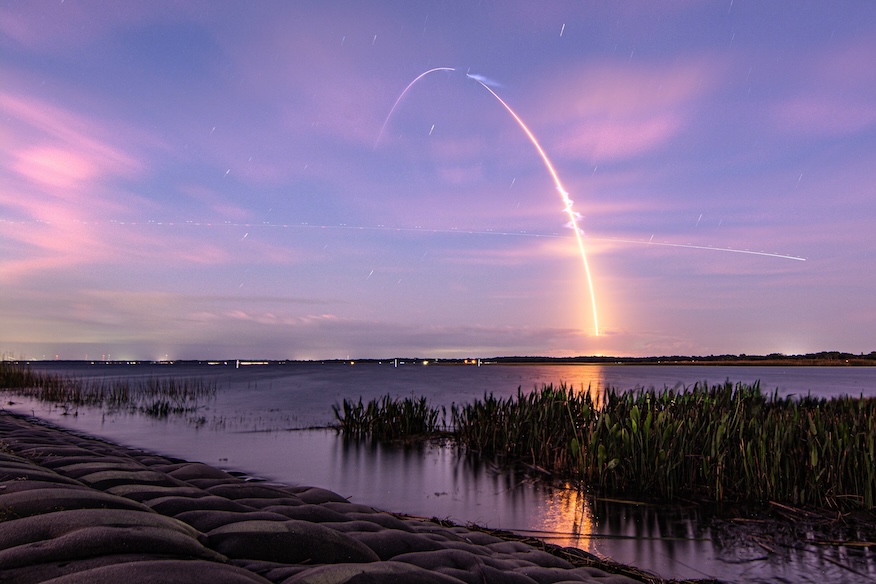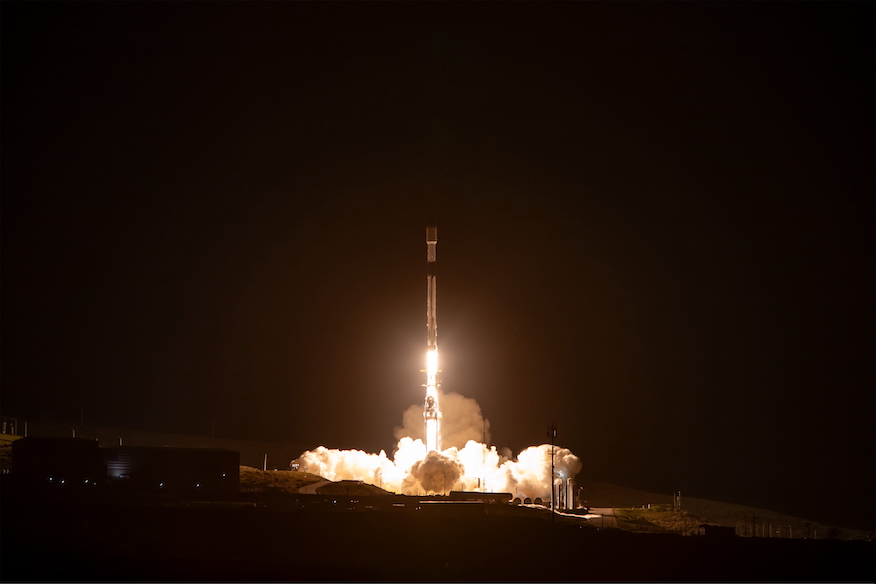
Update Oct. 17, 4:38 p.m. EDT: SpaceX is moving to their 24-hour backup date for the launch and is targeting liftoff no earlier the Friday, Oct. 18.
Update Oct. 17, 5:08 p.m. EDT: Adding new forecast information for the updated launch opportunity.
Update Oct. 18, 2:45 p.m. EDT: Adding details regarding the Falcon 9 rocket and the payload.
Update Oct. 18, 8:01 p.m. EDT: SpaceX launched the mission and landed the first stage booster on its droneship.
Update Oct. 18, 8:36 p.m. EDT: SpaceX confirms successful deployment of the 20 Starlink satellites.
Against the backdrop of a pink and purple sunset, SpaceX launched its third batch of Starlink satellites to low Earth orbit since Monday morning. It was able to overcome a blustery evening that at times saw wind gusts of more than 26 miles per hour.
Liftoff of the Starlink 8-19 mission from Cape Canaveral Space Force Station happened at 7:31 p.m. EDT (2331 UTC) on Friday, Oct. 18.
Thursday evening, the 45th Weather Squadron issued a launch weather forecast for the new launch date of Friday, which showed only a 40 percent chance of favorable weather at liftoff. Liftoff winds were forecast to be between 19 and 26 miles per hour.
“Strong onshore flow will continue through the weekend as the high pressure across the eastern U.S. will persist. Moisture will be slow to return, but some isolated onshore-moving showers are possible by the backup day,” meteorologists said. “The primary concern remains Liftoff Winds with the addition of the Cumulus Cloud Rule for Saturday.”
The Falcon 9 first stage booster supporting the mission, tail number B1076 in the SpaceX fleet, launched for a 17th time. It previously supported Intelsat 40e, Turksat-6A, the 26th Commercial Resupply Services (CRS-26) mission to the International Space Station and eight previous Starlink missions.
A little more than eight minutes after liftoff, B1076 touched down on the SpaceX droneship, ‘Just Read the Instructions.’ The mission marked the 94th successful booster landing using JRTI and the 355th booster landing to date.
Onboard the rocket are 20 Starlink V2 Mini satellites, of which 13 feature Direct to Cell capabilities. With a successful deployment, the total number of DTC Starlink satellites launched now stands at 259.
This launch of Starlink satellites also brought the total number of orbital launches from Florida this year to 71, one shy from tying the total launched in 2023.



